- Home
- Daniel Quinn
The Story of B Page 28
The Story of B Read online
Page 28
It’s during this period, starting around five thousand years ago, that we see the first states formed for the purpose of armed defense and aggression. It’s during this period that we see the standing army forged as the monarch’s sword of power. Without a standing army, a king is just a windbag in fancy clothes. You know that. But with a standing army, a king can impose his will on his enemies and engrave his name in history—and absolutely the only names we have from this era are the names of conquering kings. No scientists, no philosophers, no historians, no prophets, just conquerors. Again, nothing cyclic going on here. For the first time in human history, the important people are the people with armies.
Now note well that no one thought that the appearance of armies was a bad sign—a sign of distress. They thought it was a good sign. They thought the armies represented an improvement. The water was just getting delightfully warm, and no one worried about a few little bubbles.
After this point military needs became the chief stimulus for technological advancement in our culture. Nothing wrong with that, is there? Our soldiers need better armor, better swords, better chariots, better bows and arrows, better scaling machines, better rams, better artillery, better guns, better tanks, better planes, better bombs, better rockets, better nerve gas … well, you see what I mean. At this point no one saw technology in the service of warfare as a sign that something bad was going on. They thought it was an improvement.
From this point on, the frequency and severity of wars will serve as one measure of how hot the water is getting around our smiling frog.
Signs of distress: 3000–1400 B.C.E.
The fire burned on under the cauldron of our culture, and the next doubling of our population took only sixteen hundred years. There were a hundred million humans now, at 1400 B.C.E., probably ninety percent of them being members of our culture. The Near East hadn’t been big enough for us for a long time. Totalitarian agriculture had moved northward and eastward into Russia and India and China, northward and westward into Asia Minor and Europe. Other kinds of agriculture had once been practiced in all these lands, but now—need I say it?—agriculture meant our style of agriculture.
The water is getting hotter—always getting hotter. All the old signs of distress are there, of course—why would they go away? As the water heats up, the old signs just get bigger and more dramatic. War? The wars of the previous age were piddling affairs compared with the wars of this age. This is the Bronze Age! Real weapons, by God! Real armor! Vast standing armies, supported by unbelievable imperial wealth!
Unlike signs of war, other signs of distress aren’t cast in bronze or chiseled in stone. No one’s sculpting friezes to depict life in the slums of Memphis or Troy. No one’s writing news stories to expose official corruption in Knossos or Mohenjo-Daro. No one’s putting together film documentaries about the slave trade. Nonetheless, there’s at least one sign that can be read in the evidence: Crime was emerging as a problem.
Looking out into your faces, I see how unimpressed you are with this news. Crime? Crime is universal among humans, isn’t it? No, actually it isn’t. Misbehavior, yes. Unpleasant behavior, disruptive behavior, yes. People can always be counted on to fall in love with the wrong person or to lose their tempers or to be stupid or greedy or vengeful. Crime is something else, and we all know that. What we mean by crime doesn’t exist among tribal peoples, but this isn’t because they’re nicer people than we are, it’s because they’re organized in a different way. This is worth spending a moment on.
If someone irritates you—let’s say by constantly interrupting you while you’re talking—this isn’t a crime. You can’t call the police and have this person arrested, tried, and sent to prison, because interrupting people isn’t a crime. This means you have to handle it yourself, whatever way you can. But if this same person walks onto your property and refuses to leave, this is a trespass—a crime—and you can absolutely call the police and have this person arrested, tried, and maybe even sent to prison. In other words, crimes engage the machinery of the state, while other unpleasant behaviors don’t. Crimes are what the state defines as crimes. Trespassing is a crime, but interrupting is not, and we therefore have two entirely different ways of handling them—which people in tribal societies do not. Whatever the trouble is, whether it’s bad manners or murder, they handle it themselves, the way you handle the interrupter. Evoking the power of the state isn’t an option for them, because they have no state. In tribal societies, crime simply doesn’t exist as a separate category of human behavior.
Note again: There’s nothing cyclical about the appearance of crime in human society. For the first time in history, people were dealing with crime. And note that crime made its appearance during the dawning age of literacy. What this means is that, as soon as people started to write, they started writing laws; this is because writing enabled them to do something they hadn’t been able to do before. Writing enabled them to define in exact, fixed terms the behaviors they wanted the state to regulate, punish, and suppress.
From this point on, crime would have an identity of its own as “a problem” in our culture. Like war, it was destined to stay with us—East and West—right up to the present moment. From this point on, crime would join war as a measure of how hot the water was becoming around our smiling frog.
Signs of distress: 1400–0 B.C.E.
The fire burned on under the cauldron of our culture, and the next doubling of our population took only fourteen hundred years. There were two hundred million humans now, at the beginning of our “Common Era,” ninety-five percent or more of them belonging to our culture, East and West.
It was an era of political and military adventurism. Hammurabi made himself master of all Mesopotamia. Sesostris III of Egypt invaded Palestine and Syria. Assyria’s Tiglath Pileser I extended his rule to the shores of the Mediterranean. Egyptian pharaoh Sheshonk overran Palestine. Tiglath Pileser HI conquered Syria, Palestine, Israel, and Babylon. Babylon’s Second Nebuchadnezzar took Jerusalem and Tyre. Cyrus the Great extended his reach across the whole of the civilized west, and two centuries later Alexander the Great made the same imperial reach.
It was also an era of civil revolt and assassination. The reign of Assyria’s Shalmaneser ended in revolution. A revolt in Chalcidice against Athenian rule marked the beginning of the twenty-year-long conflict known as the Peloponnesian War. A few years later Mitylene in Lesbos also revolted. Spartans, Achaeans, and Arcadians organized a rebellion against Macedonian rule. A revolt in Egypt brought Ptolemy HI home from his military campaign in Syria. Philip of Macedon was assassinated, as was Darius HI of Persia, Seleucus HI Soter, the Carthaginian general Hasdrubel, social reformer Tiberius Sempronius Gracchus, the Seleucid king Antiochus VIII, Chinese emperor Wong Mong, and Roman emperors Claudius and Domitian.
But these weren’t the only new signs of stress observable in this age. Counterfeiting, coinage debasement, catastrophic inflation—all those nasty tricks were seen regularly now. Famine became a regular feature of life all over the civilized world, as did plague, ever symptomatic of overcrowding and poor sanitation; in 429 B.C.E. plague carried off as much as two thirds of the population of Athens. Thinkers in both China and Europe were beginning to advise people to have smaller families.
Slavery became a huge, international business, and of course would remain one down to the present moment. It’s estimated that at the midpoint of the fifth century every third or fourth person in Athens was a slave. When Carthage fell to Rome in 146 B.C.E., fifty thousand of the survivors were sold as slaves. In 132 B.C.E. some seventy thousand Roman slaves rebelled; when the revolt was put down, twenty thousand were crucified, but this was far from the end of Rome’s problems with its slaves.
But new signs of distress appeared in this period that were far more relevant to our purpose here tonight. For the first time in history, people were beginning to suspect that something fundamentally wrong was going on here. For the first time in history, people were beginning to feel empty,
were beginning to feel that their lives were not amounting to enough, were beginning to wonder if this is all there is to life, were beginning to hanker after something vaguely more. For the first time in history, people began listening to religious teachers who promised them salvation.
It’s impossible to overstate the novelty of this idea of salvation. Religion had been around in our culture for thousands of years, of course, but it had never been about salvation as we understand it or as the people of this period began to understand it. Earlier gods had been talismanic gods of kitchen and crop, mining and mist, housepainting and herding, stroked at need like lucky charms, and earlier religions had been state religions, part of the apparatus of sovereignty and governance (as is apparent from their temples, built for royal ceremonies, not for popular public devotions).
Judaism, Brahmanism, Hinduism, Shintoism, and Buddhism all came into being during this period and had no existence before it. Quite suddenly, after six thousand years of totalitarian agriculture and civilization building, the people of our culture—East and West, twins of a single birth—were beginning to wonder if their lives made sense, were beginning to perceive a void in themselves that economic success and civil esteem could not fill, were beginning to imagine that something was profoundly, even innately, wrong with them.
Signs of distress: 0–1200 C.E.
The fire burned on under the cauldron of our culture, and the next doubling of our population would take only twelve hundred years. There would be four hundred million humans at the end of it, ninety-eight percent of them belonging to our culture, East and West. War, plague, famine, political corruption and unrest, crime, and economic instability were fixtures of our cultural life and would remain so. Salvationist religions had been entrenched in the East for centuries when this period began, but the great empire of the West still saluted its dozens of talismanic deities, from Aeolus to Zephyrus. Nonetheless the ordinary people of that empire—the slaves, the conquered, the peasants, the unenfranchised masses—were ready when the first great Salvationist religion of the West arrived on its doorstep. It was easy for them to envision humankind as innately flawed and to envision themselves as sinners in need of rescue from eternal damnation. They were eager to despise the world and to dream of a blissful afterlife in which the poor and the humble of this world would be exalted over the proud and the powerful.
The fire burned on unwaveringly under the cauldron of our culture, but people everywhere now had Salvationist religions to show them how to understand and deal with the inevitable discomfort of being alive. Adherents tend to concentrate on the differences between these religions, but I concentrate on their agreements, which are as follows: The human condition is what it is, and no amount of effort on your part will change that; it’s not within your power to save your people, your friends, your parents, your children, or your spouse, but there is one person (and only one) you can save, and that’s you. Nobody can save you but you, and there’s nobody you can save but yourself. You can carry the word to others and they can carry the word to you, but it never comes down to anything but this, whether it’s Buddhism, Hinduism, Judaism, Christianity, or Islam: Nobody can save you but you, and there’s nobody you can save but yourself. Salvation is of course the most wonderful thing you can achieve in your life—and you not only don’t have to share it, it isn’t even possible to share it.
As far as these religions have it worked out, if you fail of salvation, then your failure is complete, whether others succeed or not. On the other hand, if you find salvation, then your success is complete—again, whether others succeed or not. Ultimately, as these religions have it, if you’re saved, then literally nothing else in the entire universe matters. Your salvation is what matters. Nothing else—not even my salvation (except of course, to me).
This was a new vision of what counts in the world. Forget the boiling, forget the pain. Nothing matters but you and your salvation.
Signs of distress: 1200–1700
It was quite a vision—but of course the fire burned on under the cauldron of our culture, and the next doubling of our population would take only five hundred years. There would be eight hundred million humans at the end of it, ninety-nine percent of them belonging to our culture, East and West. It’s the age of bubonic plague, the Mongol Horde, the Inquisition. The first known madhouse and the first debtor’s prison are opened in London. Farm laborers revolt in France in 1251 and 1358, textile workers revolt in Flanders in 1280; Wat Tyler’s rebellion reduces England to anarchy in 1381, as workers of all kinds unite to demand an end to exploitation; workers riot in plague- and famine-racked Japan in 1428 and again in 1461; Russia’s serfs rise in revolt in 1671 and 1672; Bohemia’s serfs revolt eight years later. The Black Death arrives to devastate Europe in the middle of the fourteenth century and returns periodically for the next two centuries, carrying off tens of thousands with every outbreak; in two years alone in the seventeenth century it will kill a million people in northern Italy. The Jews make a handy scapegoat for everyone’s pain, for everything that goes wrong; France tries to expel them in 1252, later forces them to wear distinctive badges, later strips them of their possessions, later tries to expel them again; Britain tries to expel them in 1290 and 1306; Cologne tries to expel them in 1414; blamed for spreading the Black Death whenever and wherever it arrives, thousands are hanged and burned alive; Castile tries to expel them in 1492; thousands are slaughtered in Lisbon in 1506; Pope Paul III walls them off from the rest of Rome, creating the first ghetto. The anguish of the age finds expression in flagellant movements that foster the idea that God will not be so tempted to find extravagant punishments for us (plagues, famines, wars, and so on) if we preempt him by inflicting extravagant punishments on ourselves. For a time in 1374, Aix-la-Chapelle is in the grip of a strange mania that will fill the streets with thousands of frenzied dancers. Millions will die as famine strikes Japan in 1232, Germany and Italy in 1258, England in 1294 and 1555, all of Western Europe in 1315, Lisbon in 1569, Italy in 1591, Austria in 1596, Russia in 1603, Denmark in 1650, Bengal in 1669, Japan in 1674. Syphilis and typhus make their appearance in Europe. Ergotism, a fungus food poisoning, becomes endemic in Germany, killing thousands. An unknown sweating sickness visits and revisits England, killing tens of thousands. Smallpox, typhus, and diphtheria epidemics carry off thousands. Inquisitors develop a novel technique to combat heresy and witchcraft, torturing suspects until they implicate others, who are tortured until they implicate others, who are tortured until they implicate others, ad infinitum. The slave trade flourishes as millions of Africans are transported to the New World. I don’t bother to mention war, political corruption, and crime, which continue unabated and reach new heights. There will be few to argue with Thomas Hobbes when, in 1651, he describes the life of man as “solitary, poore, nasty, brutish, and short.” A few years later Blaise Pascal will note that “All men naturally hate one another.” The period ends in decades of economic chaos, exacerbated by revolts, famines, and epidemics.
Christianity becomes the first global Salvationist religion, penetrating the Far East and the New World. At the same time it fractures. The first fracture is resisted hard, but after that, disintegration becomes commonplace.
Please don’t overlook the point I’m making here. I’m not collecting signals of human evil. These are reactions to overcrowding—too many people competing for too few resources, eating rotten food, drinking fouled water, watching their families starve, watching their families fall to the plague.
Signs of distress: 1700–1900
The fire burned on under the cauldron of our culture, and the next doubling of our population would take only two hundred years. There would be one and a half billion humans at the end of it, all but half a percent of them belonging to our culture, East and West. It would be a period in which, for the first time, religious prophets would attract followers simply by predicting the imminent end of the world; in which the opium trade would become an international big business, sponsored by the
East India Company and protected by British warships; in which Australia, New Guinea, India, Indochina, and Africa would be claimed or carved up as colonies by the major powers of Europe; in which indigenous peoples all around the world would be wiped out in the millions by diseases brought to them by Europeans—measles, pellagra, whooping cough, smallpox, cholera—with millions more herded onto reservations or killed outright to make room for white expansion.
This isn’t to say that native peoples alone were suffering. Sixty million Europeans died of smallpox in the eighteenth century alone. Tens of millions died in cholera epidemics. I’d need ten minutes to list all the dozens of fatal appearances that plague, typhus, yellow fever, scarlet fever, and influenza made during this period. And anyone who doubts the integral connection between agriculture and famine need only examine the record of this period: crop failure and famine, crop failure and famine, crop failure and famine, again and again all over the civilized world. The numbers are staggering. Ten million starved to death in Bengal, 1769. Two million in Ireland and Russia in 1845 and 1846. Nearly fifteen million in China and India from 1876 to 1879. In France, Germany, Italy, Britain, Japan, and elsewhere, tens of thousands, hundreds of thousands died in other famines too numerous to mention.
As the cities became more crowded, human anguish reached highs that would have been unimaginable in previous ages, with hundreds of millions inhabiting slums of inconceivable squalor, prey to disease borne by rats and contaminated water, without education or means of betterment. Crime flourished as never before and was generally punished by public maiming, branding, flogging, or death; imprisonment as an alternate form of punishment developed only late in the period. Mental illness also flourished as never before—madness, derangement, whatever you choose to call it. No one knew what to do with lunatics; they were typically incarcerated alongside criminals, chained to the walls, flogged, forgotten.

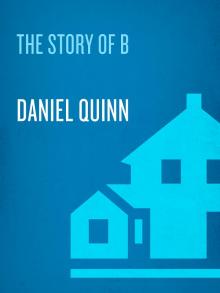 The Story of B
The Story of B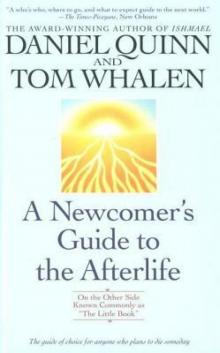 A Newcomer's Guide to the Afterlife: On the Other Side Known Commonly as the Little Book
A Newcomer's Guide to the Afterlife: On the Other Side Known Commonly as the Little Book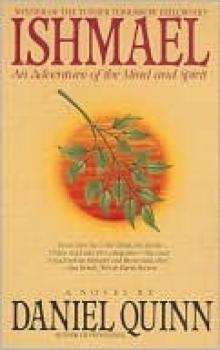 Ishmael: An Adventure of the Mind and Spirit
Ishmael: An Adventure of the Mind and Spirit CLONES: The Anthology
CLONES: The Anthology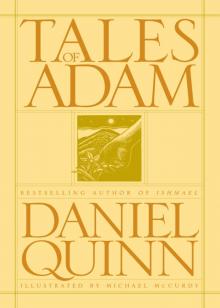 Tales of Adam
Tales of Adam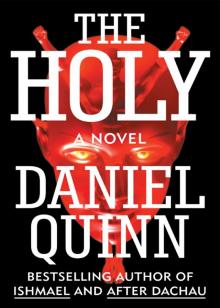 The Holy
The Holy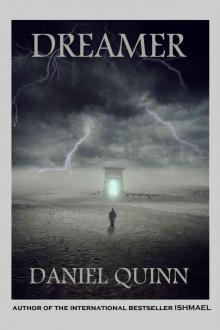 Dreamer
Dreamer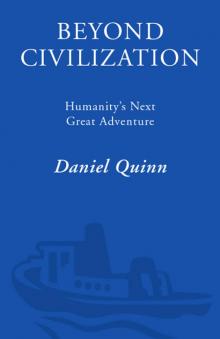 Beyond Civilization: Humanity's Next Great Adventure
Beyond Civilization: Humanity's Next Great Adventure After Dachau
After Dachau If They Give You Lined Paper, Write Sideways.
If They Give You Lined Paper, Write Sideways.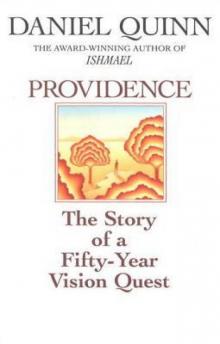 Providence
Providence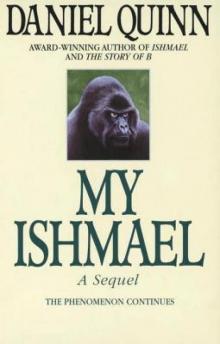 My Ishmael
My Ishmael Beyond Civilization
Beyond Civilization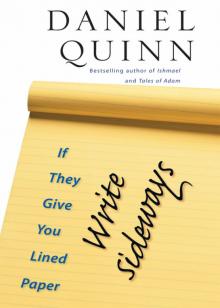 If They Give You Lined Paper, Write Sideways
If They Give You Lined Paper, Write Sideways Ishmael
Ishmael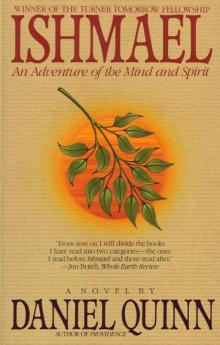 Ishmael i-1
Ishmael i-1 A Newcomer's Guide to the Afterlife
A Newcomer's Guide to the Afterlife